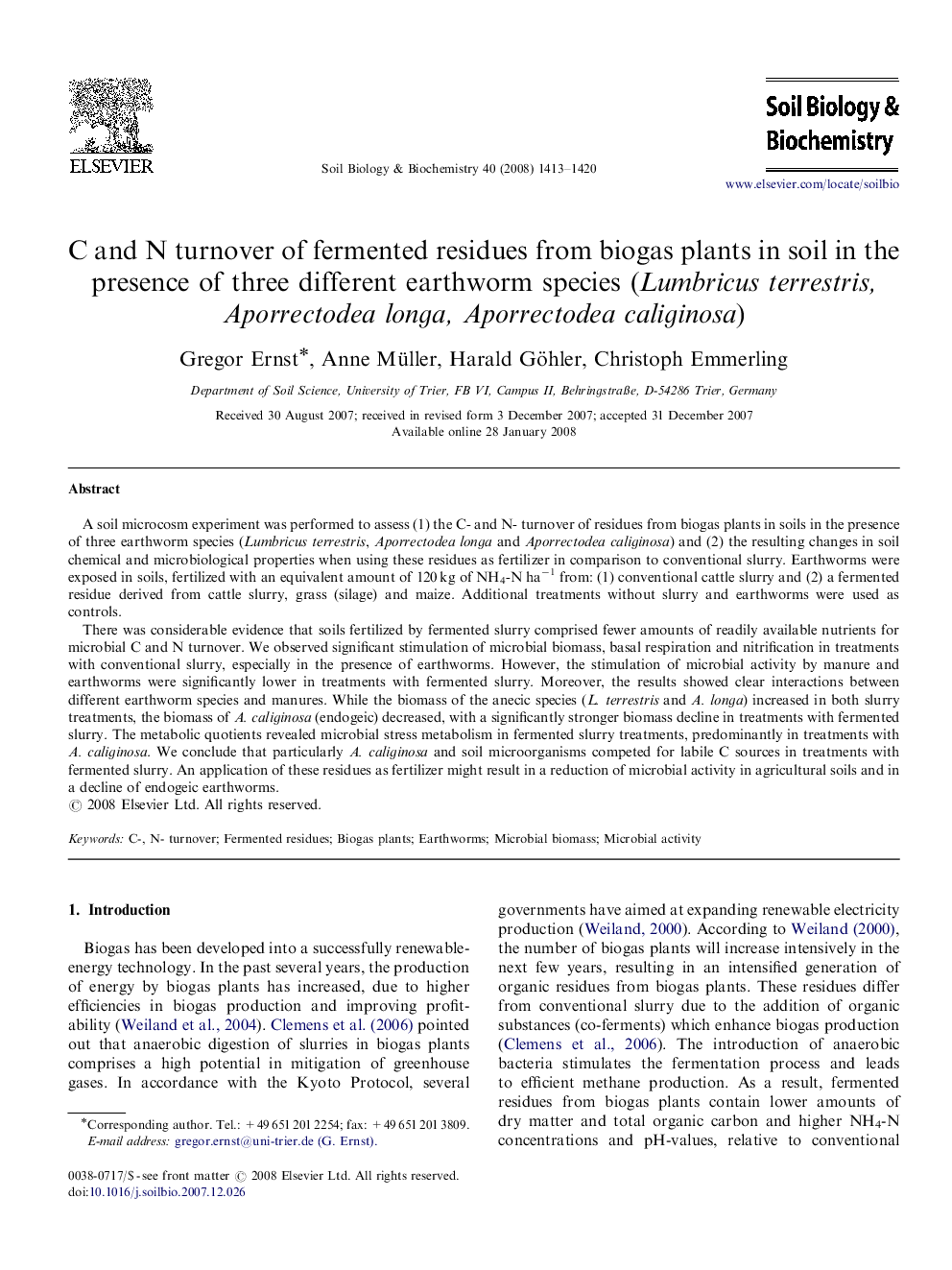| Article ID | Journal | Published Year | Pages | File Type |
|---|---|---|---|---|
| 2026948 | Soil Biology and Biochemistry | 2008 | 8 Pages |
A soil microcosm experiment was performed to assess (1) the C- and N- turnover of residues from biogas plants in soils in the presence of three earthworm species (Lumbricus terrestris, Aporrectodea longa and Aporrectodea caliginosa) and (2) the resulting changes in soil chemical and microbiological properties when using these residues as fertilizer in comparison to conventional slurry. Earthworms were exposed in soils, fertilized with an equivalent amount of 120 kg of NH4-N ha−1 from: (1) conventional cattle slurry and (2) a fermented residue derived from cattle slurry, grass (silage) and maize. Additional treatments without slurry and earthworms were used as controls.There was considerable evidence that soils fertilized by fermented slurry comprised fewer amounts of readily available nutrients for microbial C and N turnover. We observed significant stimulation of microbial biomass, basal respiration and nitrification in treatments with conventional slurry, especially in the presence of earthworms. However, the stimulation of microbial activity by manure and earthworms were significantly lower in treatments with fermented slurry. Moreover, the results showed clear interactions between different earthworm species and manures. While the biomass of the anecic species (L. terrestris and A. longa) increased in both slurry treatments, the biomass of A. caliginosa (endogeic) decreased, with a significantly stronger biomass decline in treatments with fermented slurry. The metabolic quotients revealed microbial stress metabolism in fermented slurry treatments, predominantly in treatments with A. caliginosa. We conclude that particularly A. caliginosa and soil microorganisms competed for labile C sources in treatments with fermented slurry. An application of these residues as fertilizer might result in a reduction of microbial activity in agricultural soils and in a decline of endogeic earthworms.
